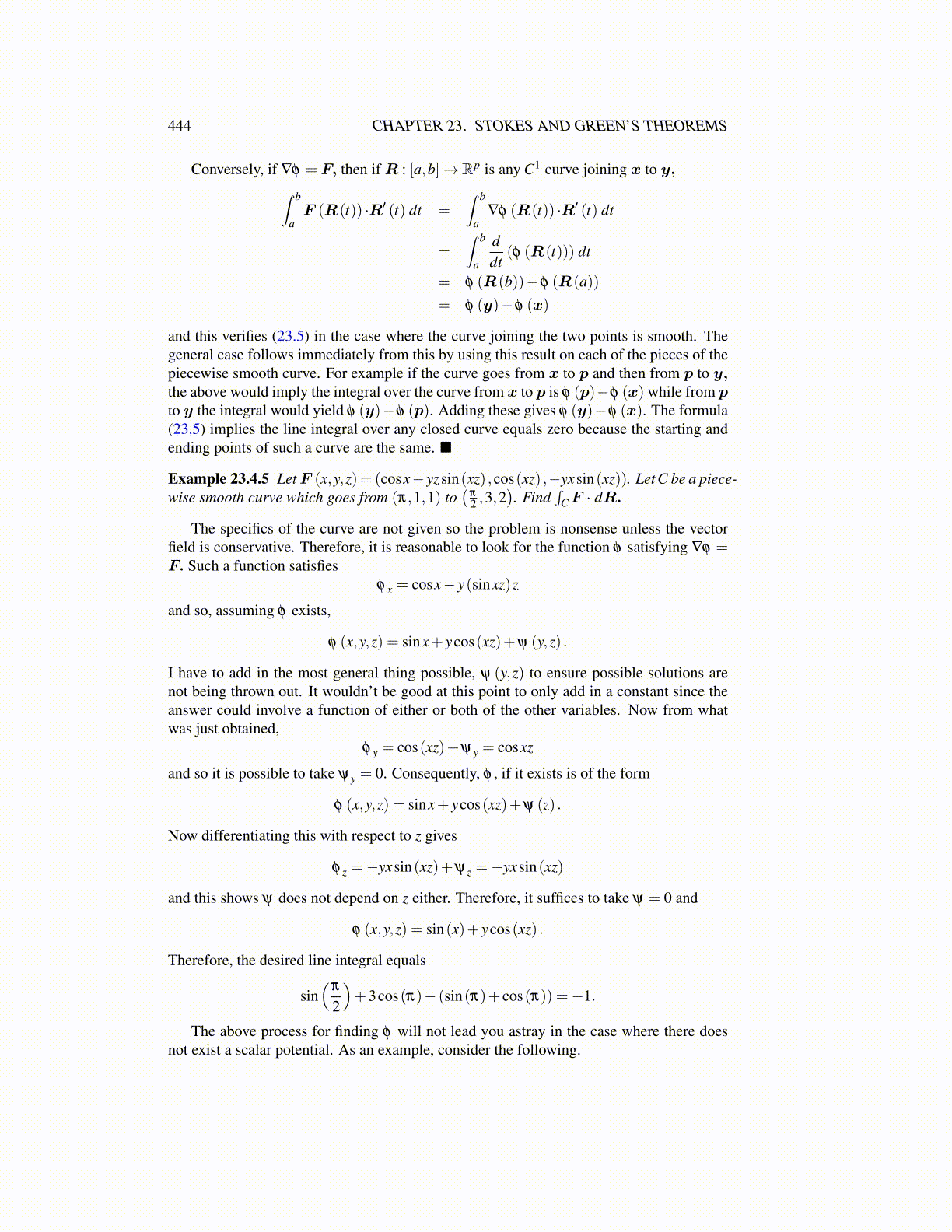
444 CHAPTER 23. STOKES AND GREEN’S THEOREMS
Conversely, if ∇φ = F, then if R : [a,b]→ Rp is any C1 curve joining x to y,∫ b
aF (R(t)) ·R′ (t) dt =
∫ b
a∇φ (R(t)) ·R′ (t) dt
=∫ b
a
ddt
(φ (R(t))) dt
= φ (R(b))−φ (R(a))
= φ (y)−φ (x)
and this verifies (23.5) in the case where the curve joining the two points is smooth. Thegeneral case follows immediately from this by using this result on each of the pieces of thepiecewise smooth curve. For example if the curve goes from x to p and then from p to y,the above would imply the integral over the curve from x to p is φ (p)−φ (x) while from pto y the integral would yield φ (y)−φ (p). Adding these gives φ (y)−φ (x). The formula(23.5) implies the line integral over any closed curve equals zero because the starting andending points of such a curve are the same. ■
Example 23.4.5 Let F (x,y,z)= (cosx− yzsin(xz) ,cos(xz) ,−yxsin(xz)). Let C be a piece-wise smooth curve which goes from (π,1,1) to
(π
2 ,3,2). Find
∫C F · dR.
The specifics of the curve are not given so the problem is nonsense unless the vectorfield is conservative. Therefore, it is reasonable to look for the function φ satisfying ∇φ =F. Such a function satisfies
φ x = cosx− y(sinxz)z
and so, assuming φ exists,
φ (x,y,z) = sinx+ ycos(xz)+ψ (y,z) .
I have to add in the most general thing possible, ψ (y,z) to ensure possible solutions arenot being thrown out. It wouldn’t be good at this point to only add in a constant since theanswer could involve a function of either or both of the other variables. Now from whatwas just obtained,
φ y = cos(xz)+ψy = cosxz
and so it is possible to take ψy = 0. Consequently, φ , if it exists is of the form
φ (x,y,z) = sinx+ ycos(xz)+ψ (z) .
Now differentiating this with respect to z gives
φ z =−yxsin(xz)+ψz =−yxsin(xz)
and this shows ψ does not depend on z either. Therefore, it suffices to take ψ = 0 and
φ (x,y,z) = sin(x)+ ycos(xz) .
Therefore, the desired line integral equals
sin(
π
2
)+3cos(π)− (sin(π)+ cos(π)) =−1.
The above process for finding φ will not lead you astray in the case where there doesnot exist a scalar potential. As an example, consider the following.